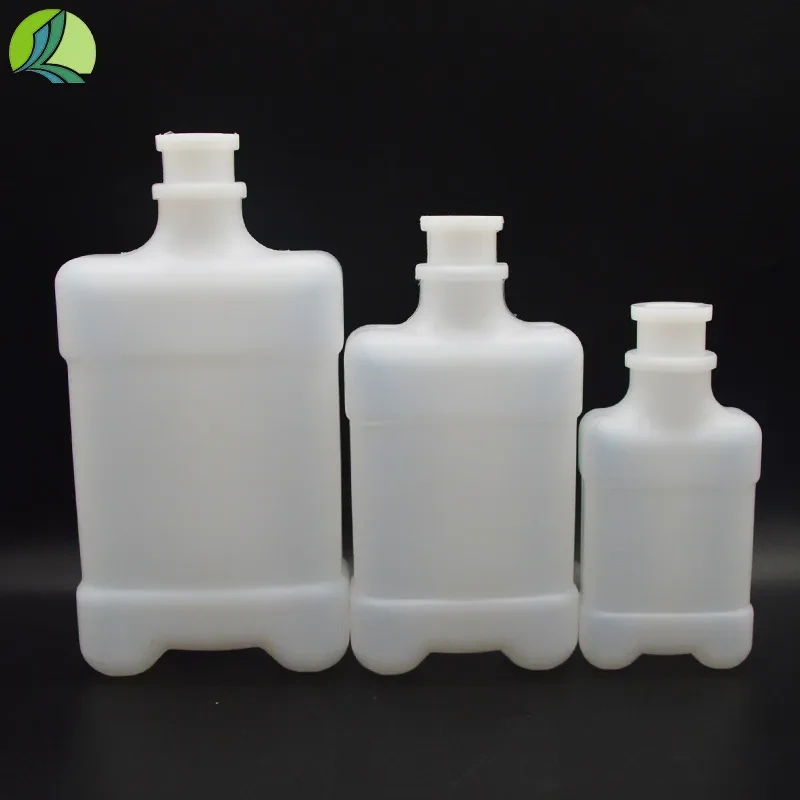https://www.wahmg.com/)">
Choosing the Right Containers for Storing Chemical Reagents and Solutions
Choosing the Right Containers for Storing Chemical Reagents and Solutions
The Importance of Reagent Containers in Laboratory Settings
In the realm of scientific exploration, the role of reagent containers cannot be overstated. These essential vessels are designed to safely store, transport, and dispense chemicals used in various experiments and analyses. Proper selection and utilization of reagent containers are critical to maintaining the integrity of scientific work and ensuring the safety of laboratory personnel.
Reagent containers come in a variety of shapes, sizes, and materials, tailored to meet the diverse needs of different substances. Common materials include glass, plastic, and metal, each offering unique advantages and disadvantages. Glass containers are often favored for their inertness, making them suitable for storing reactive chemicals that may interact with plastic. On the other hand, plastic containers are lightweight, durable, and less prone to breakage, making them practical for everyday laboratory use. However, it's crucial to select plastic types, such as polyethylene or polypropylene, that resist chemical deterioration, especially for organic solvents and acids.
One significant aspect of reagent container design is the closure mechanism. Proper sealing is vital to prevent contamination and evaporation of volatile substances. Containers with screw caps, snap-on lids, or specialized pumps allow for secure storage while facilitating easy access to the reagents. Additionally, labeling these containers accurately is essential for clear identification, minimizing the risk of cross-contamination, and ensuring that scientists can quickly locate the required chemical.
reagent containers

Contamination is a significant concern in laboratories that can lead to inaccurate results or failed experiments. To mitigate this risk, it is crucial to use reagent containers specifically designed for storing the particular chemicals in use. For instance, containers designed for storing volatile organic compounds will have features to minimize exposure to air. Similarly, corrosive substances require containers made from materials resistant to rust and degradation, ensuring both the safety of the worker and the validity of the experiment.
Moreover, the size of the container is another central consideration. Containers that are too large can lead to difficulties in handling, while those that are too small may restrict the quantity available for experiments. In high-throughput laboratories, where multiple samples are tested simultaneously, it may be more efficient to utilize smaller containers to streamline the process. However, having larger bulk containers on hand is often necessary for volume purchasing, reducing costs in the long run.
Temperature control is another aspect affected by the choice of reagent containers. Some chemicals require refrigeration or protection from light to maintain their efficacy. Companies are now producing specialized containers that can insulate contents or filter light effectively. Utilizing these can ensure that reagents remain viable, thus preserving the accuracy of experimental results.
In conclusion, reagent containers play a pivotal role in laboratory settings, impacting both the safety of the working environment and the precision of scientific work. Choosing the appropriate type of container based on material, closure mechanism, size, and storage conditions is essential. By paying close attention to these factors, laboratory personnel can not only enhance their workflow efficiency but also uphold the integrity of their scientific results. As research continues to advance, the importance of reliable and specialized reagent containers will remain paramount, ensuring that scientific exploration can proceed safely and effectively.
-
Wholesale Plastic Juice Bottles with Caps 16 oz Options Available Bulk Packaging SolutionsNewsJun.10,2025
-
Laboratory Apparatus Reagent Bottle – Durable & Chemical Resistant Bottles for Safe StorageNewsJun.10,2025
-
Squeezable Dropper Bottles Durable, Leak-Proof & CustomizableNewsMay.30,2025
-
Affordable Plastic Petri Plates Sterile & Disposable Lab-GradeNewsMay.30,2025
-
Eye Dropper Caps Precision 24/410 & Plastic Bottle-Compatible TipsNewsMay.30,2025
-
Affordable Mini Spray Bottle Price & Wholesale Deals Shop NowNewsMay.29,2025





















